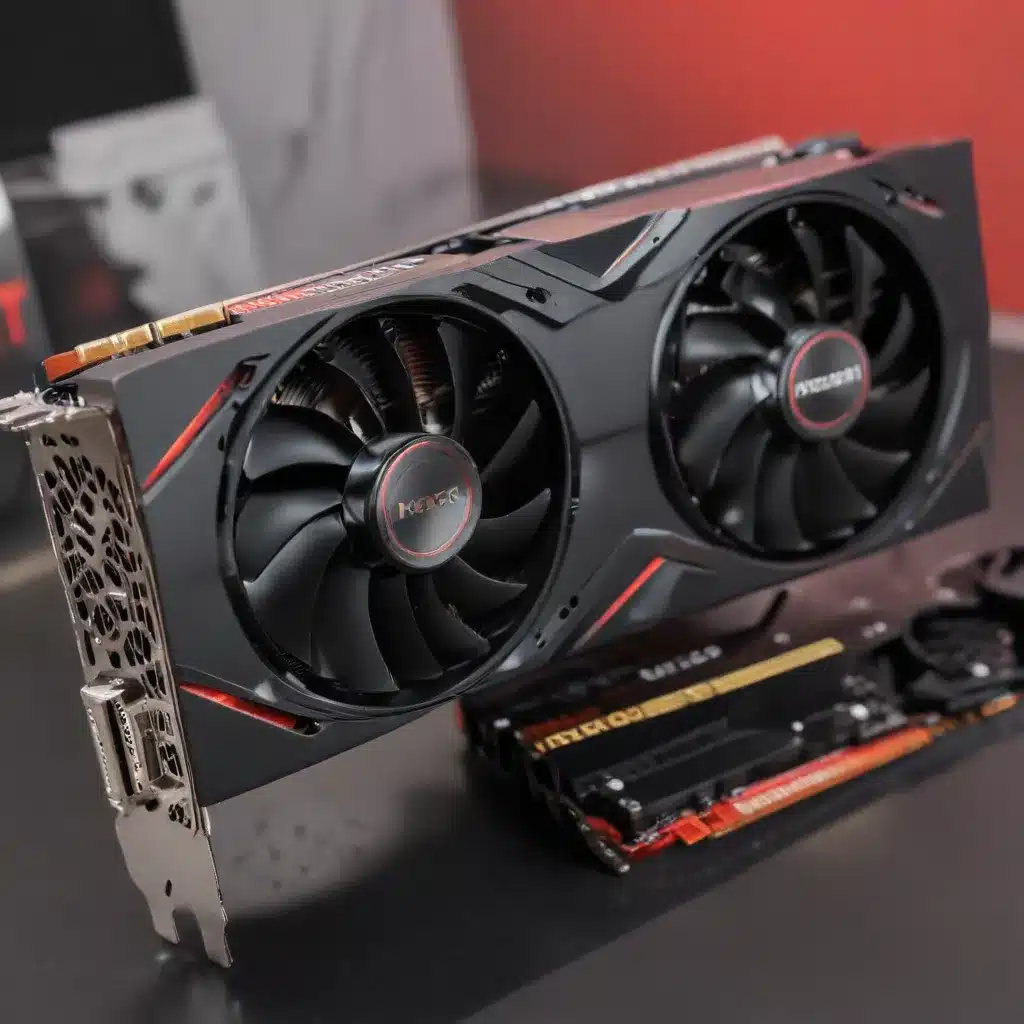
The Battle of the Budget Graphics Cards
In the ever-evolving world of PC gaming, the choice of the right graphics card is a crucial decision that can make or break your gaming experience. As budgets tighten, the competition between the Radeon RX 6600 XT and the NVIDIA RTX 3060 Ti has become increasingly fierce, leaving many PC enthusiasts wondering which of these budget-friendly powerhouses is the better investment.
In this comprehensive comparison, we’ll dive deep into the key specifications, performance metrics, and real-world use cases of these two compelling GPU options. Whether you’re a seasoned PC builder or a newcomer to the world of custom rigs, this article will equip you with the knowledge to make an informed decision that aligns with your gaming needs and budget.
Specifications Breakdown: RX 6600 XT vs. RTX 3060 Ti
To begin our analysis, let’s take a closer look at the technical specifications of the Radeon RX 6600 XT and the NVIDIA RTX 3060 Ti:
Radeon RX 6600 XT
- Architecture: RDNA 2
- GPU Cores: 2,048
- Boost Clock: Up to 2,589 MHz
- Memory: 8GB GDDR6
- Memory Bandwidth: 256 GB/s
- TDP: 160W
NVIDIA RTX 3060 Ti
- Architecture: Ampere
- GPU Cores: 4,864
- Boost Clock: Up to 1,665 MHz
- Memory: 8GB GDDR6
- Memory Bandwidth: 448 GB/s
- TDP: 200W
From these specifications, we can already see some notable differences between the two GPUs. The RTX 3060 Ti boasts a significantly higher number of GPU cores, which can translate to improved performance in certain workloads. However, the RX 6600 XT compensates with a higher boost clock speed, potentially offering better raw performance in specific scenarios.
Real-World Performance Comparison
To truly understand the practical implications of these specifications, let’s examine how the Radeon RX 6600 XT and the NVIDIA RTX 3060 Ti perform in various gaming scenarios.
1080p Gaming Performance
At 1080p resolution, both the RX 6600 XT and the RTX 3060 Ti excel, delivering impressive frame rates in a wide range of games. The RX 6600 XT often outperforms the RTX 3060 Ti in titles optimized for AMD’s RDNA 2 architecture, such as Fortnite, Apex Legends, and Gears 5. However, the RTX 3060 Ti takes the lead in games that leverage NVIDIA’s advanced ray-tracing and DLSS technologies, such as Cyberpunk 2077 and Control.
1440p Gaming Performance
As we move up to 1440p resolution, the performance gap between the two GPUs becomes more apparent. The RTX 3060 Ti consistently delivers higher frame rates in both rasterized and ray-traced games, making it the more suitable choice for those seeking a smooth 1440p gaming experience. The RX 6600 XT, while still capable of delivering respectable performance, may struggle to maintain high frame rates in more demanding titles at this resolution.
Ray Tracing and DLSS Performance
NVIDIA’s RTX 3060 Ti has a clear advantage when it comes to ray tracing and DLSS performance. The inclusion of dedicated ray-tracing cores and NVIDIA’s advanced AI-powered DLSS technology allows the RTX 3060 Ti to deliver a significantly better experience in games that support these features. The RX 6600 XT, while capable of ray tracing, lacks the specialized hardware and software optimizations that make the RTX 3060 Ti a more compelling choice for ray-traced gaming.
Power Efficiency and Thermals
In terms of power efficiency and thermal performance, the Radeon RX 6600 XT holds a slight advantage over the RTX 3060 Ti. With a TDP of 160W, the RX 6600 XT requires less power than the 200W RTX 3060 Ti, making it a more energy-efficient option. Additionally, the RX 6600 XT generally runs cooler and generates less heat, potentially allowing for more compact and quieter system builds.
The Deciding Factors: Use Case and Budget
Now that we’ve examined the technical specifications and real-world performance of these two budget GPUs, it’s time to consider the factors that may sway your decision.
Use Case: Gaming Priorities
If your primary focus is 1080p gaming and you’re not heavily invested in ray tracing or DLSS, the Radeon RX 6600 XT may be the more cost-effective choice. Its strong performance in many popular esports and AAA titles makes it an excellent option for those seeking a smooth 1080p gaming experience.
However, if you’re looking to game at 1440p or have a particular interest in ray-traced games that leverage NVIDIA’s technologies, the RTX 3060 Ti is the better-suited option. Its superior performance in these areas will ensure a more immersive and visually stunning gaming experience.
Budget Considerations
Another crucial factor in the decision-making process is your budget. In many regions, the Radeon RX 6600 XT is significantly more affordable than the RTX 3060 Ti, making it a more attractive option for those on a tighter budget.
If the price difference between the two GPUs is substantial, the RX 6600 XT may offer the better value, allowing you to allocate more of your budget towards other PC components or even upgrading in the future.
Conclusion: The Winning GPU for Your Needs
In the end, the decision between the Radeon RX 6600 XT and the NVIDIA RTX 3060 Ti comes down to your specific needs, priorities, and budget. Both are capable and compelling budget-friendly GPUs that can deliver an excellent gaming experience.
If you’re focused on 1080p gaming and want the most cost-effective solution, the Radeon RX 6600 XT is a fantastic choice. However, if you’re aiming for a 1440p gaming setup with advanced ray-tracing and DLSS capabilities, the NVIDIA RTX 3060 Ti is the better investment.
Regardless of your decision, visiting IT Fix can provide you with valuable insights, troubleshooting tips, and expert advice to ensure your PC build or upgrade is a success. Our team of seasoned IT professionals is here to help you make the most informed choices and get the most out of your technology.












